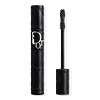What's inside
What's inside
 Key Ingredients
Key Ingredients

 Benefits
Benefits

 Concerns
Concerns

 Ingredients Side-by-side
Ingredients Side-by-side

Water
Skin ConditioningParaffin
PerfumingCera Alba
EmollientGlyceryl Stearate
EmollientPolyacrylate-21
Euphorbia Cerifera Wax
Copernicia Cerifera Wax
Vp/Eicosene Copolymer
Steareth-21
CleansingPalmitic Acid
EmollientStearic Acid
CleansingSynthetic Fluorphlogopite
Helianthus Annuus Seed Oil Unsaponifiables
EmollientDimer Dilinoleyl Dimer Dilinoleate
EmollientSteareth-2
EmulsifyingCaprylyl Glycol
EmollientAminomethyl Propanediol
BufferingCellulose
AbsorbentPanthenol
Skin ConditioningCentaurea Cyanus Flower Water
Skin ConditioningHydroxyacetophenone
AntioxidantHydroxyethylcellulose
Emulsion StabilisingChlorphenesin
AntimicrobialButylene Glycol
HumectantCrambe Abyssinica Seed Oil
Skin ConditioningTrideceth-6 Phosphate
EmulsifyingTocopheryl Acetate
AntioxidantDipropylene Glycol
HumectantGlyceryl Caprylate
EmollientPentaerythrityl Tetra-Di-T-Butyl Hydroxyhydrocinnamate
AntioxidantDisodium Phosphate
BufferingSodium Benzoate
MaskingSodium Phosphate
BufferingPolysorbate 60
EmulsifyingPotassium Sorbate
PreservativeCI 77499
Cosmetic ColorantWater, Paraffin, Cera Alba, Glyceryl Stearate, Polyacrylate-21, Euphorbia Cerifera Wax, Copernicia Cerifera Wax, Vp/Eicosene Copolymer, Steareth-21, Palmitic Acid, Stearic Acid, Synthetic Fluorphlogopite, Helianthus Annuus Seed Oil Unsaponifiables, Dimer Dilinoleyl Dimer Dilinoleate, Steareth-2, Caprylyl Glycol, Aminomethyl Propanediol, Cellulose, Panthenol, Centaurea Cyanus Flower Water, Hydroxyacetophenone, Hydroxyethylcellulose, Chlorphenesin, Butylene Glycol, Crambe Abyssinica Seed Oil, Trideceth-6 Phosphate, Tocopheryl Acetate, Dipropylene Glycol, Glyceryl Caprylate, Pentaerythrityl Tetra-Di-T-Butyl Hydroxyhydrocinnamate, Disodium Phosphate, Sodium Benzoate, Sodium Phosphate, Polysorbate 60, Potassium Sorbate, CI 77499
Water
Skin ConditioningButylene Glycol
HumectantOryza Sativa Bran Wax
Skin ConditioningGlyceryl Stearate
EmollientSynthetic Beeswax
Emulsion StabilisingAcacia Senegal Gum
MaskingStearic Acid
CleansingGlycerin
HumectantPalmitic Acid
EmollientHelianthus Annuus Seed Wax
Skin ConditioningPolybutene
Vp/Eicosene Copolymer
Hydrogenated Castor Oil
EmollientPanthenol
Skin ConditioningArginine
MaskingRosa Damascena Flower Extract
MaskingMyrothamnus Flabellifolia Leaf/Stem Extract
HumectantBiotinoyl Tripeptide-1
Polyimide-1
Aminomethyl Propanol
BufferingOlea Europaea Oil Unsaponifiables
Skin ConditioningXanthan Gum
EmulsifyingEthylhexylglycerin
Skin ConditioningRhus Succedanea Fruit Wax
Rhus Verniciflua Peel Wax
Shorea Robusta Resin
TonicHydroxyacetophenone
AntioxidantTocopherol
AntioxidantCI 77499
Cosmetic ColorantWater, Butylene Glycol, Oryza Sativa Bran Wax, Glyceryl Stearate, Synthetic Beeswax, Acacia Senegal Gum, Stearic Acid, Glycerin, Palmitic Acid, Helianthus Annuus Seed Wax, Polybutene, Vp/Eicosene Copolymer, Hydrogenated Castor Oil, Panthenol, Arginine, Rosa Damascena Flower Extract, Myrothamnus Flabellifolia Leaf/Stem Extract, Biotinoyl Tripeptide-1, Polyimide-1, Aminomethyl Propanol, Olea Europaea Oil Unsaponifiables, Xanthan Gum, Ethylhexylglycerin, Rhus Succedanea Fruit Wax, Rhus Verniciflua Peel Wax, Shorea Robusta Resin, Hydroxyacetophenone, Tocopherol, CI 77499
Ingredients Explained
These ingredients are found in both products.
Ingredients higher up in an ingredient list are typically present in a larger amount.
Butylene Glycol (or BG) is used within cosmetic products for a few different reasons:
Overall, Butylene Glycol is a safe and well-rounded ingredient that works well with other ingredients.
Though this ingredient works well with most skin types, some people with sensitive skin may experience a reaction such as allergic rashes, closed comedones, or itchiness.
Learn more about Butylene GlycolCi 77499 is also hydrated iron III oxide. It is created from mixing red and black iron oxides. This helps give shades of darkness to a product.
Iron III oxides are classified as inorganic chemicals for coloring.
Glyceryl Stearate is a mix of glycerin and stearic acid.
It is used to stabilize the mixing of water and oil ingredients. By preventing these ingredients from separating, it can help elongate shelf life. It can also help thicken the product's texture.
As an emollient, it helps soften skin and supports barrier-replenishing ingredients.
In cosmetics, Glyceryl Stearate is often made from vegetable oils or synthetically produced.
This ingredient may not be fungal-acne safe
Fun fact: The human body also creates Glyceryl Stearate naturally.
Learn more about Glyceryl StearateHydroxyacetophenone is antioxidant with skin conditioning and soothing properties. It also boosts the efficiency of preservatives.
This ingredient is not irritating or sensitizing.
Palmitic Acid is a fatty acid naturally found in our skin and in many plant and animal sources. In cosmetics, it is usually derived from palm oil. It serves many purposes in skincare, acting as a cleanser, emollient, and emulsifier.
As an emollient, palmitic acid helps soften and smooth the skin by preventing water loss. In cleansers, it helps remove oil and dirt while creating foam.
Its emulsifying properties help stabilize products by keeping water and oil-based ingredients from separating.
This may not be suitable for fungal acne-prone skin, as fatty acids like this can sometimes trigger breakouts in sensitive individuals.
Learn more about Palmitic AcidPanthenol is a common ingredient that helps hydrate and soothe the skin. It is found naturally in our skin and hair.
There are two forms of panthenol: D and L.
D-panthenol is also known as dexpanthenol. Most cosmetics use dexpanthenol or a mixture of D and L-panthenol.
Panthenol is famous due to its ability to go deeper into the skin's layers. Using this ingredient has numerous pros (and no cons):
Like hyaluronic acid, panthenol is a humectant. Humectants are able to bind and hold large amounts of water to keep skin hydrated.
This ingredient works well for wound healing. It works by increasing tissue in the wound and helps close open wounds.
Once oxidized, panthenol converts to pantothenic acid. Panthothenic acid is found in all living cells.
This ingredient is also referred to as pro-vitamin B5.
Learn more about PanthenolStearic Acid is a fatty acid. It is an emollient, emulsifier, and texture enhancer.
As an emollient, stearic acid helps soften skin. It aids the skin's protective barrier by preventing water loss. It also provides a gentle cleansing effect without stripping away natural oils.
Stearic acid may also be used to enhance the texture of products. It can add volume and stabilize ingredients such as water and oil. This can help water and oil ingredients from separating.
Sources of stearic acid include animal or vegetable fats/oils such as coconut or shea. It can be naturally found in butter, cocoa butter, shea butter, vegetable fats, and animal tallow.
This ingredient may not be Malassezia folliculitis, or fungal-acne safe.
Learn more about Stearic AcidWe don't have a description for Vp/Eicosene Copolymer yet.
Water. It's the most common cosmetic ingredient of all. You'll usually see it at the top of ingredient lists, meaning that it makes up the largest part of the product.
So why is it so popular? Water most often acts as a solvent - this means that it helps dissolve other ingredients into the formulation.
You'll also recognize water as that liquid we all need to stay alive. If you see this, drink a glass of water. Stay hydrated!
Learn more about Water